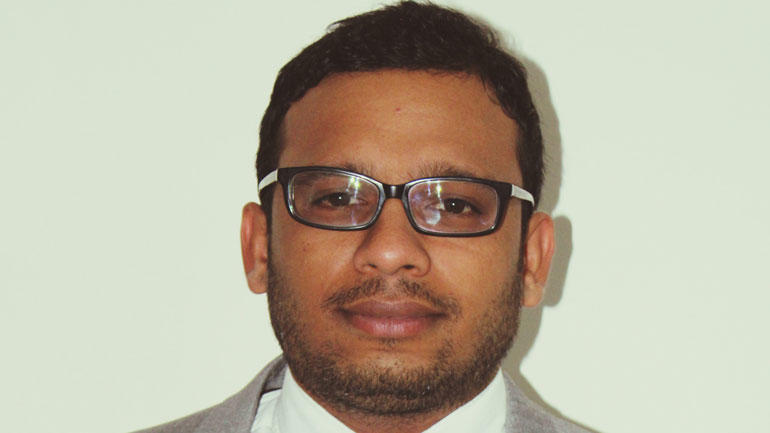
Laxma Reddy Billa har til forsvar for graden philosophiae doctor (ph.d.) ved Universitetet i Sørøst-Norge, Fakultet for teknologi, naturvitenskap og maritime fag, innlevert avhandling med tittelen «Simulation and Microfabrication of MEMS Vacuum Devices for Tera-Hertz Technology».
Prøveforelesningen «THz for sensor applications» holdes kl 10:15 og disputas kl 13:00 i auditorium A1-35 ved campus Vestfold tirsdag 3. desember.
Åpent for alle interesserte.
Om avhandlingen
This thesis proposes a new design of a slow-wave structure (SWS), called H-plane and E-plane loaded SWS, for developing a terahertz (THz) traveling wave tube (TWT). Such a new design assists in easy fabrication by using available MEMS techniques, and it can also provide a high gain-bandwidth product. Many applications explore the scarcely used THz band in the electromagnetic spectrum. However, widespread utilization of the THz band is technically challenging, due to the lack of power sources. The power level of the signal generators drastically drops as the frequency approaches the THz frequencies. Moreover, at this frequency range, the attenuation level of electromagnetic waves in the earth atmosphere increases.
In vacuum electronics family, TWT has gained particular interest for millimetre-wave and THz signal amplification for high-power and wideband applications. The characteristics of the TWT are mainly represented by the performance of a SWS. The SWS in TWT is used to facilitate the input THz signal which gets amplified by the process of the electron beam and electromagnetic wave interaction. Therefore, an efficient and reliable SWS is an essential aspect of a powerful TWT design. The thesis involves all elements of development from device design, simulations, through material growth and interactive device fabrication to extensive characterization, along with the prototype cold-testing of the scaled-up device.
The proposed SWS is investigated for TWT working at 400 GHz central frequency. The numerical simulations found that this tube can produce an excess of 25 dB small-signal gain with 60 GHz 3-dB bandwidth at 400 GHz central frequency. The LIGA technique using KMPR negative photoresist was employed to fabricate the 400-GHz E-plane and H-plane loaded SWS. The fabrication tolerances and surface roughness were obtained within the design requirements. The scale-up model of H-plane and E-plane loaded SWS at W-band (91-98 GHz) was manufactured using CNC milling and validated by scattering parameter measurements.